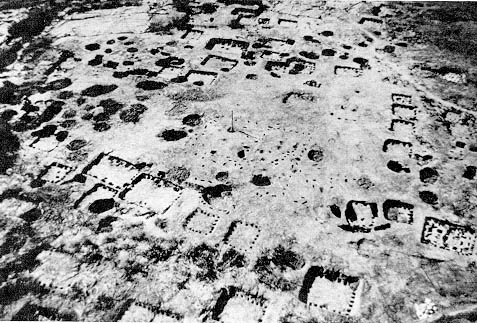
A Late Woodland & Emergent Mississippian Village (Range site),
with a central plaza.

A Late Woodland & Emergent Mississippian Village (Range site), with a central plaza. | The combination of larger and more numerous storage pits, and their location within (in addition to outside) a residence, along with a dispersal of households seems to represent a privatization of production and wealth. Prior to maize agriculture, the usual pattern was for individual households to group together and form villages. Storage pits in these villages tended to be located outside of the individual residences. At least in part, this association of households in a village may represent the communal nature of economic resources. Families whose garden failed or who experienced poor hunting success could rely on others within the village with whom they were no doubt closely related. A young male, for example, could count on his older brother, father, or other relatives in distant villages to help support his family should catastrophe or illness strike his household. Both the close association of individual households and the location of storage pits outside of individual residences seem to reflect the communal nature of many necessary goods. |
Thus, hard times would have created pressure on households to travel farther to acquire necessary resources. But the ability of households to move to more productive places would be hampered by the presence of other Mississippian groups with established access to now needed resources. How the sociopolitical mechanisms for food redistribution may have operated under failing support from nearby kin is unknown.